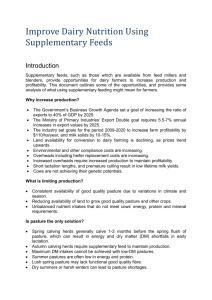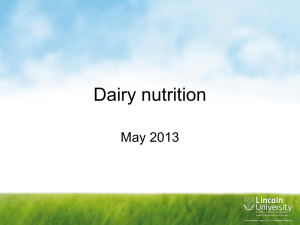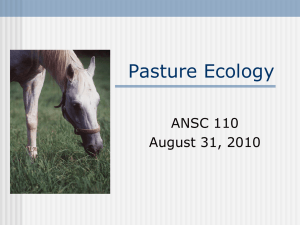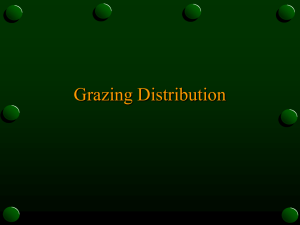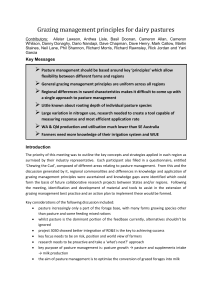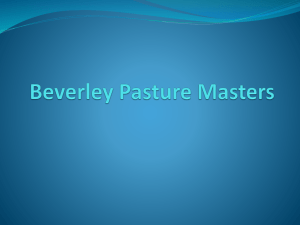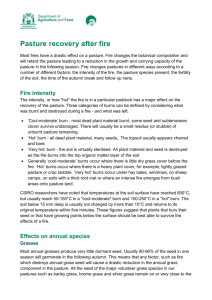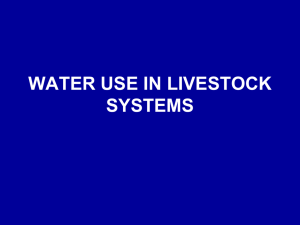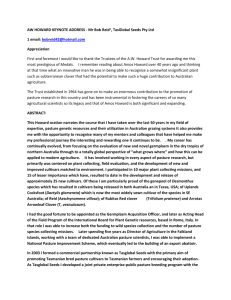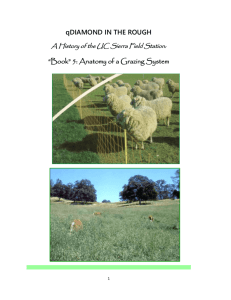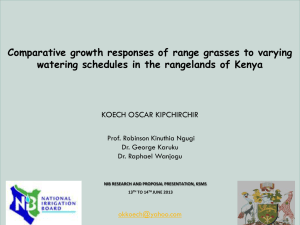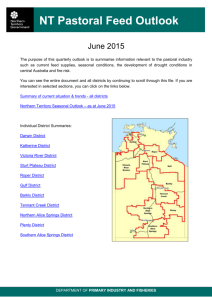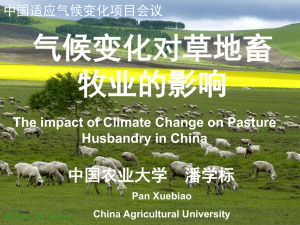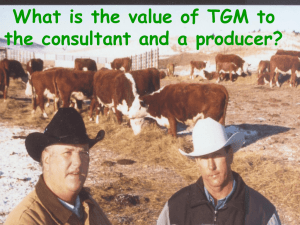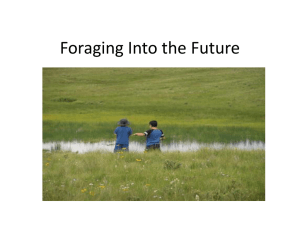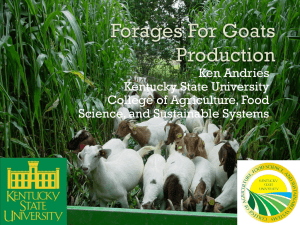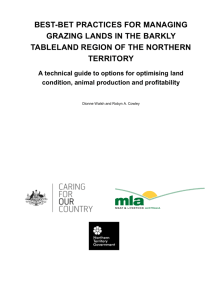Introduction to Pasture Management
advertisement
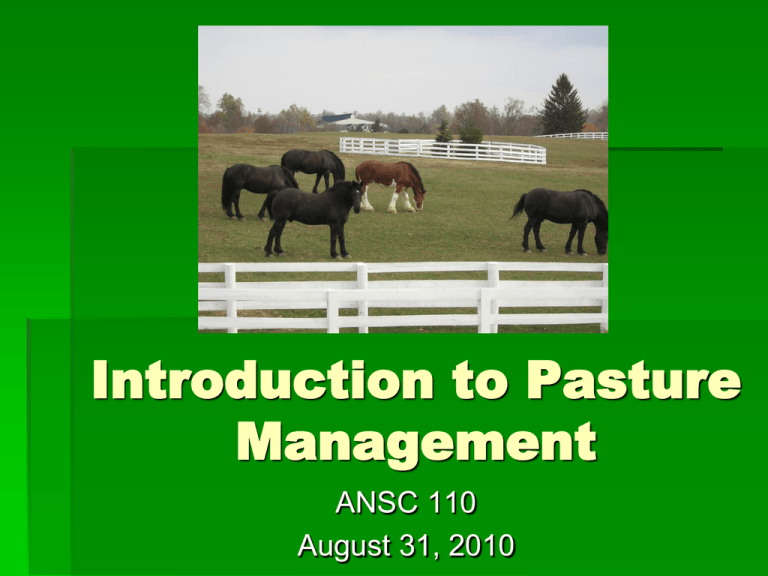
Introduction to Pasture Management ANSC 110 August 31, 2010 The basics… Pasture is healthy for your animal Sunshine Room to roam, play, socialize with others Allows for natural eating behaviors Nutritious The basics… Properly maintained pasture: 1. Can provide adequate energy, protein, vitamins and minerals to maintain most animals 2. A cheap source of feed for your animal What is a High Quality Pasture? Characteristics Dense Diverse Weed-free (relatively) Well-drained Crumbly, porous soil Palatable Advantages of Pasture Promotes normal healthy behavior Providing space for play and exercise Promotes social interaction Reduces development of vices Advantages of Pasture Reduces likelihood of colic Lowers incidence of gastric ulcers Decreased incidence of chronic obstructive pulmonary disease (Heaves) Increases bone mineral content in young horses Advantages of Pasture Can produce 1-4 tons of forage matter/acre/growing season Reduces hay costs by approx. $60-100/month Advantages of Pasture Reduces fertilizer costs when manure spread properly during year Pasture recycles nutrients from dropped manure Reduces need to manage bedding from stalls and drylots $avings Advantages – Environmental Returns Reduces erosion Recycles nutrients Supplies land surface for ground-water recharge Provides an aesthetically pleasing environment for rural and residential neighbors Disadvantages of Pasture Some weeds, grasses, and legumes contain toxic compounds: Weed examples: Jimsonweed, yellow star thistle, pokeweed Grass examples: Tall fescue Legume examples: Aslike clover, red clover Disadvantages of Pasture Spread of gastrointestinal parasites Infective stage of parasites shed in feces Optimal conditions for larval development High stocking rates increased risk of infection Manure management, appropriate stocking density, and deworming important for horse health on pasture Disadvantages – Pasture Associated Laminitis Condition of the foot characterized by inflammation of the tissues connecting the hoof wall to the major bone of the foot Severe cases may result in rotation of coffin bone High prevalence in overweight animals Hereditary trait in ponies Creating a Quality Pasture Things to consider… Management of the animals Grazing management Pasture management Timing Utilize your growing season Optimize the stocking rate Horse Grazing Behavior Time spent grazing varies Weather Forage availability Alone vs. with pals Flies Age Will consume approximately ~ 2 – 2.5% BW in DM on a daily basis Horse Grazing Behavior 40-80% time spent grazing 9% of a horse’s time is spent walking 5-10% time spent lying down Primarily 3-4 hours before dawn SELECTIVE GRAZERS Horse Grazing Behavior Grazing Management Optimize forage available Leave some for later. Avoid overgrazing. Know when to graze, when to rest Grazing Systems Continuous Rotational Strip Grazing Management Periods of occupation Recovery periods Stocking rate and density Paddock/pasture design Climate considerations Optimize the stocking rate Stocking Rate - a measurement of the longterm carrying capacity of a pasture; the number of animals on the entire grazing unit for the entire grazing season Stocking Density - the number of animals on a given unit of land for a specific amount of time (short-term measurement). Pasture Management Obtaining that optimal pasture requires management of the: PLANTS SOIL Pasture Management Species Selection Pasture Ecology Water requirements Temperature Plant anatomy/growth factors Pest control Pasture Management Pasture Nutrition Sunlight / Water Nitrogen Potassium Phosphorus Other nutrients required Soil acidity (pH level) TIMING! Timing TIMING IS EVERYTHING!!!! Seeding Grazing Resting Irrigation Fertilization Climate-dependent Utilize your growing season Different species of plants have different growth curves Variety healthy pasture year-round What’s Coming Up? What plants do I want? What plants do I NOT want? How do I get rid of the “stuff” that I don’t want? How do I keep my pasture looking good? Pasture Ecology And more . . .

